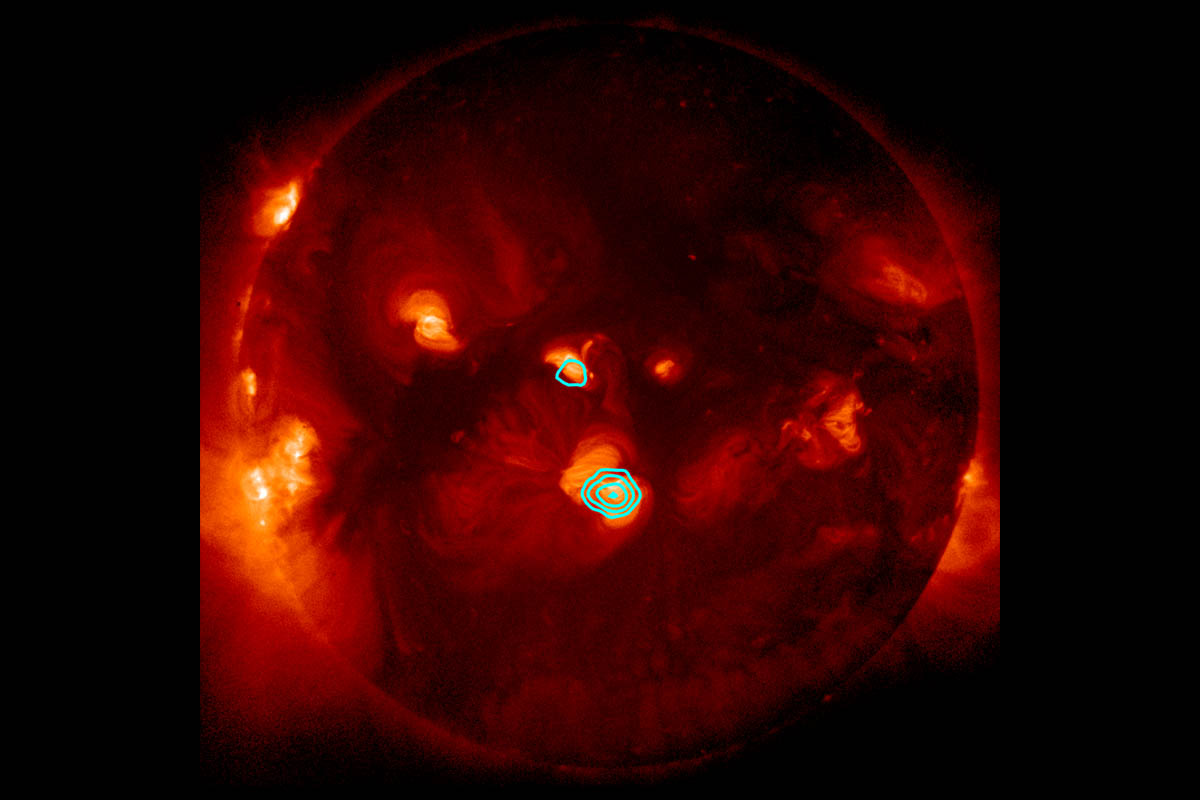The NASA-funded FOXSI instrument captured new evidence of small solar flares, called nanoflares, during its December 2014 flight on a suborbital sounding rocket. Nanoflares could help explain why the Sun’s atmosphere, the corona, is so much hotter than the surface. Here, FOXSI’s observations of hard X-rays are shown in blue, superimposed over a soft X-ray image of the Sun from JAXA and NASA’s Hinode solar-observing satellite. (JAXA/NASA/Hinode/FOXSI)
Home The NASA-funded FOXSI instrument captured new evidence of small solar flares, called nanoflares, during its December 2014 flight on a suborbital sounding rocket. Nanoflares could help explain why the Sun’s atmosphere, the corona, is so much hotter than the surface. Here, FOXSI’s observations of hard X-rays are shown in blue, superimposed over a soft X-ray image of the Sun from JAXA and NASA’s Hinode solar-observing satellite. (JAXA/NASA/Hinode/FOXSI) The NASA-funded FOXSI instrument captured new evidence of small solar flares, called nanoflares, during its December 2014 flight on a suborbital sounding rocket. Nanoflares could help explain why the Sun’s atmosphere, the corona, is so much hotter than the surface. Here, FOXSI’s observations of hard X-rays are shown in blue, superimposed over a soft X-ray image of the Sun from JAXA and NASA’s Hinode solar-observing satellite. (JAXA/NASA/Hinode/FOXSI)
The NASA-funded FOXSI instrument captured new evidence of small solar flares, called nanoflares, during its December 2014 flight on a suborbital sounding rocket. Nanoflares could help explain why the Sun’s atmosphere, the corona, is so much hotter than the surface. Here, FOXSI’s observations of hard X-rays are shown in blue, superimposed over a soft X-ray image of the Sun from JAXA and NASA’s Hinode solar-observing satellite. (JAXA/NASA/Hinode/FOXSI)


